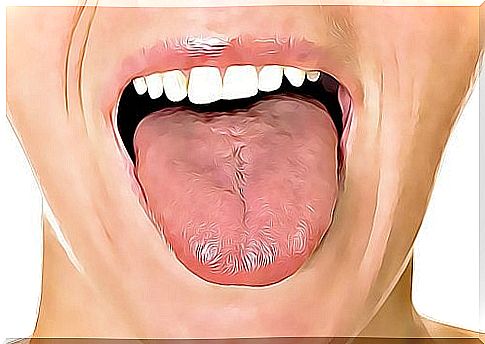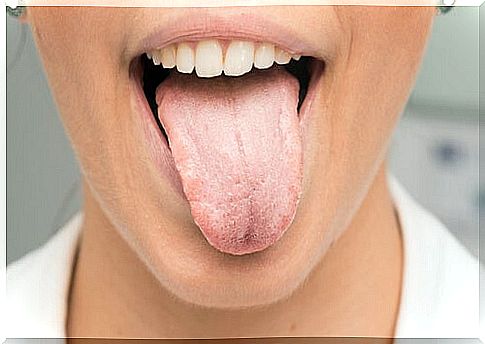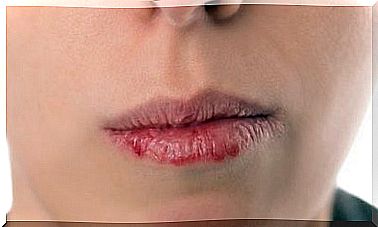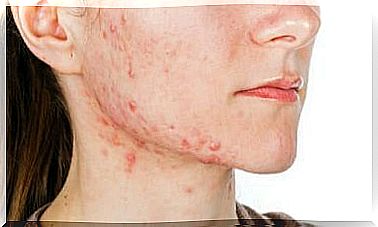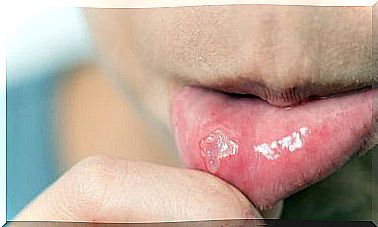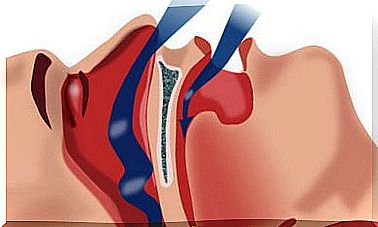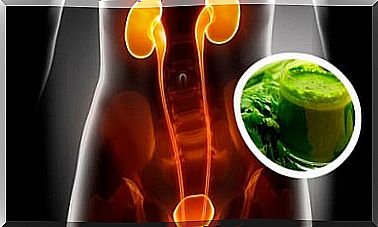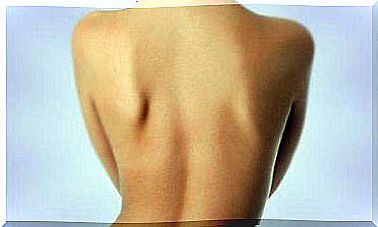Tongue Marks: What They Mean
Performing oil mouthwashes can help us clean our digestive system, as well as maintain a healthy mouth and tongue.

Language is a kind of geographical map that reflects our state of health. When we are healthy, our tongue is a reddish and homogeneous color, well hydrated.
However, when the function of an organ is not balanced, the color and texture of the tongue are altered. Marks also appear in certain areas.
Traditional Chinese medicine gives us the keys that allow us to interpret these changes. It is thus possible to prevent or cure certain diseases.
In general, if we look at the language from the front, this is what appears on the map:
- Central area: stomach and spleen.
- Sides: liver and gallbladder.
- Internal part: kidneys.
- Tip of the tongue: heart.
The color of the tongue
Its color tells us which organs may be affected. Yellowish colors signal the liver, gallbladder and stomach. A greenish color is more reminiscent of the liver. Gray has something to do with the liver and the intestine.
A whitish-colored tongue may indicate the presence of:
- Parasites,
- Anemia,
- Kidney or hormonal problems,
- Poor circulation,
- Incorrect feeding.
Let’s see some specific brands to better situate the imbalances.
A white or yellowish tongue
When the tongue is completely covered with a thin white or yellowish film, especially on the inside, the person has an imbalance in the secretions of the gallbladder which mainly causes digestive problems.
All food residues that are not digested and assimilated will ferment and rot. They will then turn into toxins.
Teeth marks on the edges of the tongue
Some people have irregular marks on the sides of their tongue, such as teeth marks. They sometimes feel the need to expel whitish phlegm.
In this case, it is bad digestion and the nutrients are not absorbed well in the small intestine. It is also very much linked to a lack of minerals.
Small buttons on the tongue
Pimples on the tongue are small points of inflammation caused by poor digestion and the presence of decaying food scraps in the large and small intestines.
Cracks on the tongue
The crevasses here are quite frequent. They look like more or less deep incisions that can appear in different places, but most often located in its center.
They reflect long-standing problems located on the walls of the colon. This is the part of the intestine that is attacked by toxic acids that come from poor digestion. It also leads to vitamin deficiency. Mucus may also appear.
Phlegm in the throat and in the mouth
The phlegm that originates in the throat and can exit through the mouth, and which is conducive to inflammation such as pharyngitis, sinusitis, etc. They are the result of poor digestion which produces toxins that the body needs to expel.
If they are accompanied by a bitter taste, there is the presence of bile. In addition, when certain foods are poorly digested and this produces acidity, the body then generates mucus intended to cover the walls of the digestive tract so that they are not irritated.
Sores in the mouth
Mouth sores are a symptom of poor digestion that results from inflammation or ulcers located somewhere in the gastrointestinal tract. Moreover, they often occur as a result of overeating.
Sometimes the marks appear outside the mouth, at the corners of the lips. If they get worse, they can form uncomfortable scabs. These marks are a reflection of duodenal ulcers caused by digestive disorders.
In order to make the symptoms highlighted by the appearance of the tongue disappear, you must first of all eat better and detoxify your body in order to free it from these harmful toxins. It will be good to consume, if necessary, a natural product that improves digestive function.
Finally, one can resort to oil-based mouthwashes. Performed daily, they cleanse our entire digestive system. In addition, they keep our tongue and mouth healthy!
